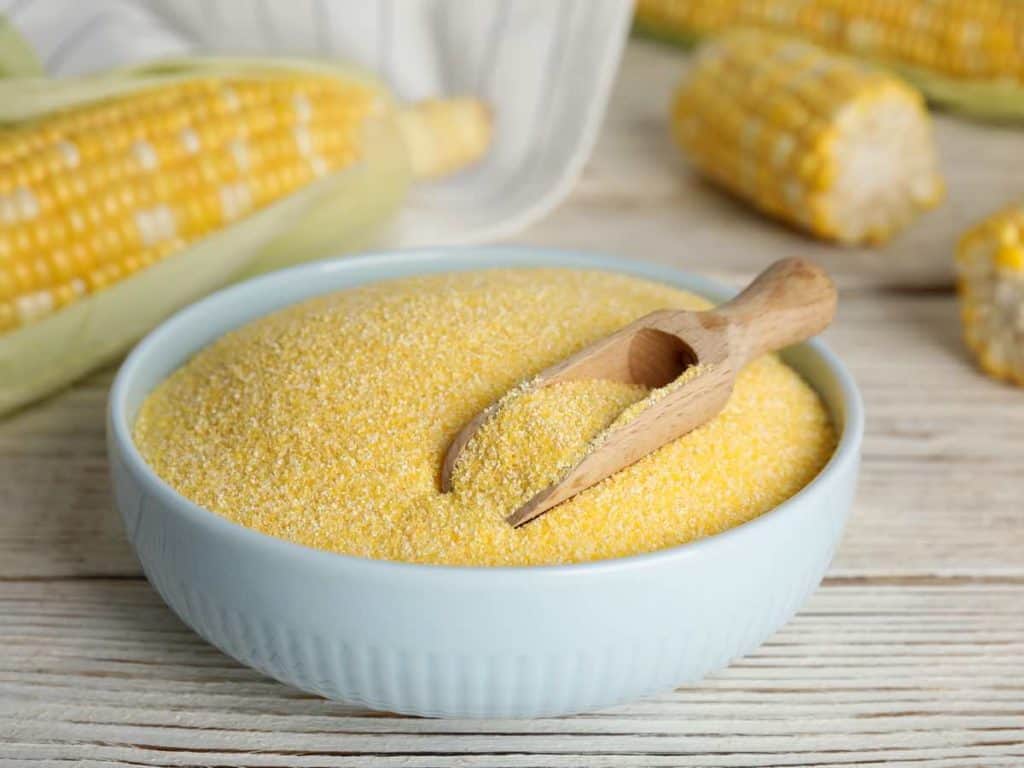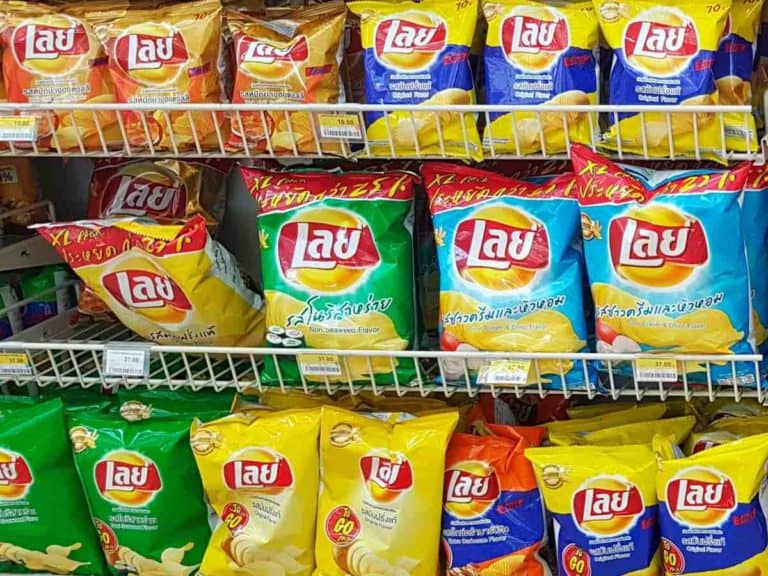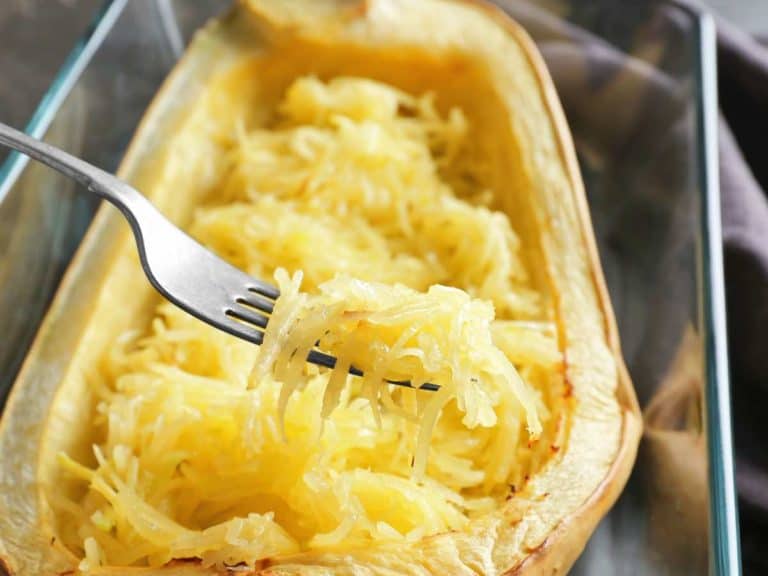Does Cornmeal Have Black Specks in It? Or Bugs?
Have you ever looked at your cornmeal or corn muffin and found it staring back with many little black eyes? I have. I’ve mistaken these black specks for many things, from bits of stone from a stone-ground masa harina pack to bits of pepper, but my greatest fear has always been to find out that the specks are bugs.
The bad news is, yes, they can be bugs. However, there’s also a good chance they aren’t.
Cornmeal and cornmeal products may naturally have black specks. These are bits of the pericarp, the skin around the corn kernel, particularly the part where it attaches to the cob. In whole-germ cornmeal, the bits of germ also appear as dark specks. However, examine your cornmeal carefully. If the specks move, or if they have visible legs, they’re insects.
If you suspect the specks are bugs, there’s a good way to test if they are. Stir a teaspoon of the suspect cornmeal into a bowl of water. Good cornmeal, including specks of pericarp and germ, will sink into and mix with the water; bugs however will float. A magnifying glass will help you make sure.
Natural specks will also not occur in great concentration. They should only make up a small proportion of your meal. However, if there are way too many of them there’s a good chance they’re bugs. Also, many bugs that can infect cornmeal will cause it to give off an unpleasant odor.
What Do Bugs in Cornmeal Look Like

Insects that can look like dark specks in cornmeal are either psocids, also known as wood or booklice or any of several kinds of grain-eating beetles. They can be distinguished from each other by size and color. Psocids can appear dark brown or gray and are no bigger than a pinhead (1-2mm), while adult flour beetles are mostly reddish-brown and about 4 mm.
Flour beetles, particularly the commonest species the red flour beetle and confused flour beetle, cause grain they are feeding on to have a pungent, somewhat medicinal smell. Moreover, flour beetle infestations often consist of both the adult beetles and their grubs, which appear as pale, off-white worms about 7 mm long.
Psocids on the other hand are particularly drawn to moist grain and grain products, and will often occur together with molds. Psocid-infested cornmeal will thus tend to have a musty or sour odor. They also feed on wood and paper, particularly moist wood and paper.
One way psocids can find their way into your pantry is through wet cartons and paper packaging, which may literally lure them out of the woodwork. Despite being called booklice or flour lice, psocids aren’t members of the louse family and aren’t parasites.
What Other Bugs Infest Cornmeal
Other insects that can infest cornmeal include various kinds of pantry moth larvae, other beetles, and grain mites. The commonest pantry pest in the United States is the pantry moth or Indian meal moth, which can infest a huge range of stored products such as grains, flours, breakfast cereals, biscuits, nuts, dried fruit, even dried meats, and dog food.
In fact, it was corn that gave the Indian meal moth its name: it’s the moth that settlers found infesting “Indian cornmeal.”
This was from back in the days when the mostly English settlers used the word “corn” for any kind of grain. Because these moths are strong fliers, they spread very easily and are now ubiquitous wherever people live.
With moth infestations, you will usually find just the caterpillars in your cornmeal and other foods. The adults may be seen flying around your pantry and kitchen, but these no longer eat.
They exist only to mate and propagate their kind by laying eggs on your stored-food containers. Moth infestations are also recognizable by the cobweb-like material the grubs leave on the food.
Aside from Indian meal moths and the above-mentioned psocids and flour beetles, other insects that you might find noshing on your cornmeal include: almond moths, Mediterranean flour moths, sawtoothed grain beetles, merchant beetles, rice weevils, maize weevils, drugstore beetles, cigarette beetles, khapra beetles, larder beetles, and grain mites.
That’s right, a lot of bugs find your cornmeal nutritious too. There is good news, however: these bugs all have pretty much the same weaknesses. What gets rid of or prevents infestations of one will also help control the others.
But first, let’s talk about whether it’s safe it is to eat cornmeal with bugs in it.
Are Bugs in Cornmeal Harmful
None of the pantry pests mentioned above are poisonous, and in fact, chances are you’ve already eaten them without knowing it. Nor are the psocids blood-sucking parasites, even if they’re called lice. However, these pests’ wastes cause changes to the flavor and quality of infested food and encourage molds and bacteria. These can cause stomach upsets.
Grain mites can also cause allergic reactions, both from accidentally inhaling their powdery wastes and from their bites. The dermal condition caused by grain mite bites seems to have been so common once that it’s still called ‘baker’s itch.’
The chemical given off by red flour beetles and confused flour beetles can cause diarrhea and gas in those with sensitive digestion. I know from bitter personal experience!
Fortunately, I got that under control with just yogurt and Yakult.
Because insect excrement and cast-off skins in cornmeal increase its temperature and moisture, an infestation can lead to the growth of harmful fungi such as aflatoxin-generating Aspergillus. Aflatoxin is a dangerous substance that can lead to food poisoning and an increased likelihood of liver diseases including liver cancer.
Long story short, if an insect infestation in your cornmeal has gotten to the point where you can already taste or smell it, you’re best off just throwing it in the garbage.
How to Get Rid of Bugs in Cornmeal
If you confirm that there are bugs in your cornmeal, it’s safest not to consume it. Dispose of it in a way that prevents reinfestation, particularly if you have pantry moths or beetles. Moths and beetles must be dealt with in all stages of their life cycle – clean away their eggs, dispose of food infested by larvae, and kill the adults before they can breed more.
Inspect the Pantry
If you find pantry pests in one package of food, it’s likely they’ve also spread to other packages in your pantry. Empty the pantry and inspect every item for insects and their traces such as pupae and empty chrysalids, dead insects, and foods with altered odors.
Also inspect other items edible to pantry pests and psocids: birdseed, dry pet foods, decor made of plant matter, and for psocids cartons, old periodicals and books, and old pieces of wood. If you have any fruit- or nut-bearing trees in your garden, make sure to clean away fallen fruits and nuts regularly.
Kill Bugs by Freezing
Pantry insects can be killed by storing the infested food for 3-4 days in the freezer. You may want to do this even with food you mean to throw away when the weather is warm, as any unkilled insects can cause renewed infestations for you or your neighbors.
Dispose of Infested Cornmeal Properly
Infested food should be placed in a sealed garbage bag and immediately thrown into the external garbage can. Make sure your garbage bags and garbage pail lid are tightly closed to prevent escapes, which can result in reinfestation.
Clean the Pantry
Clean the emptied pantry thoroughly.
Remove all its remaining contents, dispose of any cabinet liners which may retain insect eggs or pupae, and vacuum the cupboard with special attention to its corners. Wipe plastic and glass containers and the insides of the cupboard with a vinegar solution (1 part vinegar:1 part water) to repel insects.
Also, inspect the pantry for sources of moisture and remove them. Moisture is essential to psocids and flour mites, so a totally dry area will be safer from psocid and mite infestation.
Set Traps for Pantry Moths
You can keep pantry moths from spreading by setting pheromone glue traps for their adults.
These traps contain glue scented with the sex pheromones of the commonest pantry moth species and can kill all the adult male moths in your cupboard, leaving the short-lived females to die without breeding.
While traps alone will not clean out an infestation, they will help you prevent the infestation from spreading or coming back.

Dry Up Psocid Breeding Areas
If you find any moist spots built of wood in your pantry and around the house, remove the source of moisture such as by fixing faulty plumbing and airconditioning exhausts, then dust the area with diatomaceous earth, talcum powder, or borax.
Take care not to get these into food, and do not use them in areas accessible to pets and children.
If you find boards infested with psocids, clean them up and spray them with disinfectants that kill molds. Throw away moldy books, magazines, Christmas wreaths, and the like.
Psocids living in wood eat mostly mold spores, so wiping out molds and mildew and drying out the infested area will make them look for more hospitable grounds.
Give the Birds a Feast
If your cornmeal is not yet moldy or rancid, consider feeding it to the local birds, particularly in seasons when they can use extra food like the autumn migration, early spring, and winter.
Cornmeal mixed with a little peanut butter will attract a variety of birds from woodpeckers to titmice, while dry cornmeal alone will attract birds with small bills.
How to Avoid Bugs in Cornmeal
The best way to avoid bugs in your cornmeal is to practice a combination of safeguards against bringing infested foods home and maintaining vigilance over your pantry. Always check newly purchased products for infestation, wipe down cartons and plastic bags of food before storage to remove insect eggs, and freeze or refrigerate items pantry pests like.
Inspect Food Packages Before Purchase
Bugs often get into cornmeal and other foods right at the store, or in warehouses, and during shipping. To keep them out of your home, inspect every food package well before buying it.
Check for tears and holes and spillage of their contents, for strange odors, and signs of insect activity. Shake food in clear packages to stir up any bugs and make them easily visible.
If you find any infested packages, notify the store management so they can deal with them. Don’t purchase anything with a damaged container, or stored it in cartons that look like it has gotten wet or damp.
Don’t confine your inspection to just your food items. Beetles and pantry moths can lurk in birdseed and dry pet food, and psocids, being paper-eaters, may be found hiding in any cartons.
Keep the Kitchen Clean
Make sure to clean up all food spills in the kitchen and elsewhere around the home immediately.
If you bake, it’s extremely important to wipe your work counter thoroughly afterward and sweep away every last particle of spilled flour then mop the floor. Loose milled cereal products are like a dinner bell for pantry insects!
Purchase Cornmeal in Smaller Quantities
It’s better to purchase only as much cornmeal as you need or can use it within two months.
This way you’re always using fresh cornmeal and giving less time for insect infestations to develop and spread in your home. It also makes freezing easier as you won’t have as much cornmeal occupying space in your freezer.
Transfer Purchased Cornmeal to Sealed Containers
Both pantry moth larvae and adult flour beetles can chew through cartons and plastic bags, so it’s best to transfer newly purchased cornmeal to a safer container immediately on bringing it home.
Use containers with an airtight seal, preferably clear ones that let you easily inspect the contents even without opening them.
If you intend to freeze your cornmeal however you can keep it in its original packaging or ziplock bags.
If you’re purchasing cornmeal, flour, or other dry supplies in bulk to save money, consider dividing them between several smaller containers instead of a single large one. This way if ever one container gets infested there’s a chance you can still save the rest.
Freeze Cornmeal for Best Shelf Life
Cornmeal, especially whole-grain cornmeal and fresh masa, can be kept much longer if frozen.
This not only kills any pests or their eggs present in the cornmeal, but it also keeps out molds, bacteria, and prevents the stuff from going rancid. Freezing also works better against psocids than refrigeration, as moist cornmeal can clump and encourage psocid infestation if kept in the fridge.
To avoid having to repeatedly thaw and refreeze large quantities if you bought cornmeal in bulk, you can divide it among several ziplock bags each containing enough for a single use.
Clean Your Pantry Regularly
Inspect and clean your pantry regularly. Pantry pests have so many sneaky ways of getting in there that you can assume some will get in ever so often. Vacuum the cupboard, wipe down with vinegar, and dispose of items that have become infested.
Control Moisture and Humidity
Moisture and humidity encourage the growth of molds and bacteria and create the conditions necessary for psocids and flour mites to thrive. If you live in a naturally humid region, consider placing dehumidifier packs inside your pantry. Remove sources of moisture from the pantry.
Use Natural Repellents
A variety of natural repellents can help protect your pantry and kitchen from insect pests.
Aside from regular vinegar solution wipedowns, you can place dried bay leaves or cloves in your pantry, or use extracts of these or citronella as a wipe or spray. Insects of all kinds hate these odors and will be repelled by them.
That said, it can be really hard to stop a hungry bug. Use all these methods in combination to keep bugs from getting at your food, and if you ever find an infestation, stomp it out without mercy!
How Else Can Cornmeal Go Bad
Cornmeal as you may know already if you often make tortillas or polenta, comes mainly in two forms, whole-grain, and degerminated cornmeal.
Whole-grain cornmeal includes the innermost part of the corn kernel, the germ, which contains more vitamins and protein than the rest of the grain. Degerminated cornmeal has had the germ removed. While the former is tastier and more nutritious, it also has a much shorter shelf life.
Both whole-grain and degerminated cornmeal can go bad for the same basic reasons – moisture, temperature, and storage time. Moisture and warm temperatures together encourage molds and bacteria, and cornmeal, like peanuts, is susceptible to the fungi that produce aflatoxins. The oils in cornmeal can also go rancid over time in storage at warm temperatures.
Because whole-germ cornmeal contains much more oil than degerminated cornmeal, it goes rancid faster. Its nutrients also make it highly attractive to pantry insects. For these reasons, it’s best to keep whole-grain cornmeal in the freezer, especially once you’ve opened the package.
Degerminated cornmeal lasts up to a year in the pantry and up to 5 years if frozen, while whole-germ cornmeal can last 6 months to a year in the freezer. Both forms should be kept in sealed containers or ziplock bags and kept away from heat and moisture before and after opening.
However, at the end of the day, the best strategy is still to buy only as much cornmeal as needed and to use up what we have on hand quickly. Once again the hubby has the simplest solution: he’s asking me to make tortillas again.


![How to Store Pizza [Freeze, Thaw, Seal, etc]](https://foodwine.com/wp-content/uploads/pizza-794244712-768x576.jpg)


